This was published 4 years ago
Best time to visit Japan: Guide to the best month, season and things to see and do in Japan
By Ben Groundwater
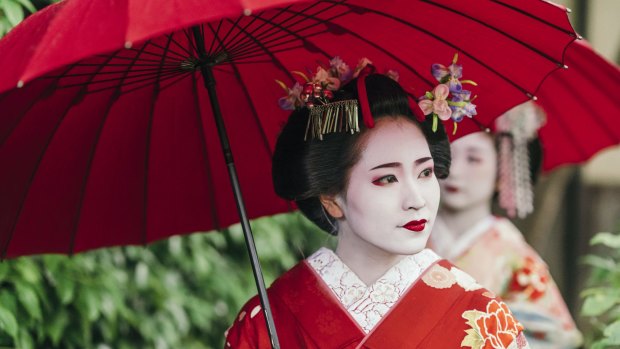
Japan's calendar has plenty happening throughout the year to keep visitors entertained.Credit: Shutterstock
There's always something to do in Japan. There's always a festival on, always a celebration taking place, always some particular food to eat or place to go or thing to see no matter what time of year you visit.
That's the great thing about this country: there's never a dull moment. However, Japan is hugely seasonal, with weather that can range from swelteringly hot to bone-chillingly cold, with attractions and events that can only be experienced at a certain time of year. If you're planning a visit, you'll need to know which season best suits your needs.
SUMMER
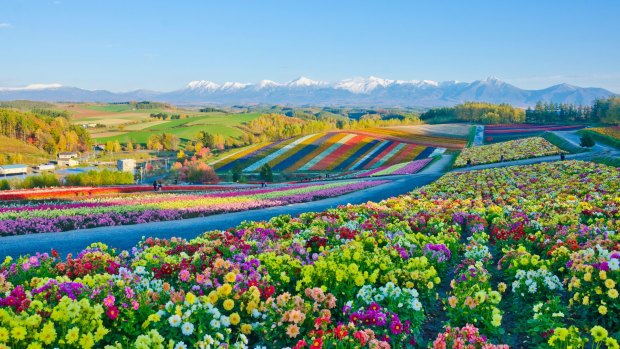
Wildflowers bloom in Japan's summer.Credit: Shutterstock
The weather is mostly hot and humid countrywide from June to August. The only way to escape this oppressive heat is to head up into the mountains, or go north to Hokkaido, the island prefecture that also escapes the June rainy season, making it the ideal place to be. In Hokkaido in summer, the high temperatures sit around the mid-20s, the wildflowers are blooming, and the seasonal produce available is worth the price of the trip alone.
Don't miss
Summer in Hokkaido is all about flowers and fish. You'll see lilac blooms in the fields here, as well as begonias, lavender, roses, marigolds, sunflowers and more. This is also the time of year locals feast on the seasonal catch: salmon, mackerel, squid and sea urchin are all at their best in the warmer months. The summer hiking is also amazing in Hokkaido, particularly around Furano, where the bulk of the island's flowers bloom.
Elsewhere in Japan, one of the pleasures of summer is the opening of seasonal beer gardens, which can be found on the top levels of major department stores, in parks, and even at large hotels.
Key events
Summer is peak season on Japan's "matsuri", or festival calendar. In July, Kyoto's Gion Matsuri runs all month, with regular parades, performances and ceremonies; the town of Shingu, meanwhile, lights up for the Nachi Fire Festival, where portable shrines are carried through the city's streets and then set alight.
In August men balance bamboo poles strung with lanterns on their heads at the Akita Kanto Matsuri; the Kodo Drummers perform their famous Earth Celebration on Sado-ga-shima island; and residents countrywide observe O-Bon, the Festival of the Dead.
AUTUMN
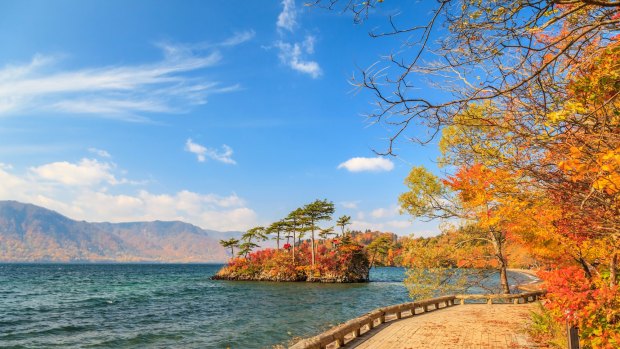
Credit: Shutterstock
The Japanese passion for cherry blossoms is legendary; however, there's an almost equal appreciation for the country's colourful autumn foliage. From September to November, locals travel across the country to view "koyo", or autumn leaves. This is best done in mountain areas such as Niseko in Hokkaido, Shiga Kogen near Nagano, Lake Towada in Akita prefecture, and Lake Ashino-ko in Kanagawa.
Even if you're not into leaves, autumn is a nice time to be in Japan, as the weather cools off after summer, and tourist numbers are still low compared to spring and winter.
Don't miss
Autumn in Japan is also an important time on the sumo calendar. There are major meets in Tokyo in September and Fukuoka in November. It's also Halloween, an American festival that is becoming seriously popular in Japan. Foodies are in luck, too: in autumn, mackerel and baby anchovies are in season, plus persimmons and yuzu are at their best.
Key events
It won't happen every year, but in 2019 the biggest event on Japan's autumn calendar will be the Rugby World Cup, which is taking place across the country from September 20 to November 2. On a more regular basis, autumn is the time for the Nagasaki Kunchi Festival, held in early October, featuring parades and floats; there's also a festival dedicated to taiko drums in Niihama in mid-October; and the Japanese Grand Prix is held in the same month.
WINTER
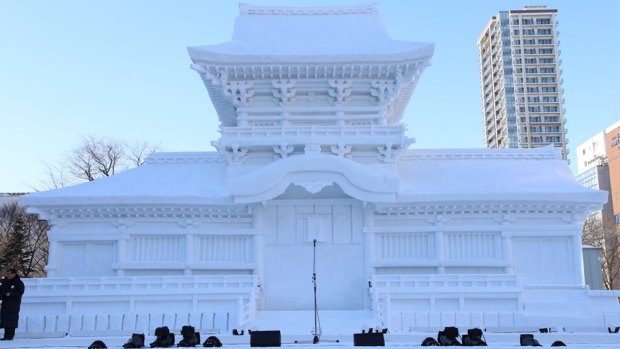
Credit: JNTO
Australian powderhounds need no introduction to Japan in winter: mountain resorts such as Niseko in Hokkaido and Hakuba on Honshu have become firm favourites with skiers and snowboarders looking for deep powder snow. Japan's old-school ski culture also makes a pleasant change from the mega-resorts so prevalent in the Western world.
Those who aren't travelling to ski, however, will find the country cold and a little inhospitable in winter. Though there are still events and festivals, many national parks and other attractions close when the snow arrives. Fortunately, there's always the tropical island prefecture of Okinawa, where temperatures regularly hit the 20s in winter.
Don't miss
Skiing and snowboarding are the most popular winter activities in Japan, and with good reason: Niseko, for example, receives a staggering average annual snowfall of 14 metres. This is also a great time to visit a "rotenburo", or outdoor onsen, where bathers can relax in a hot spring amid snowy mountain scenery. And it's perfect for viewing the snow monkeys, particularly around Nagano.
On the food front, nabe, the Japanese hotpot, is immensely popular in winter. Snow crab is also in season. And on Christmas Day, the Japanese observe a fairly bizarre new tradition: a trip to KFC.
Key events
The biggest event on the Japanese winter calendar is undoubtedly the Sapporo Snow Festival, life-sized buildings and other structures are carved out of blocks of snow. Also in the cooler, months, Kyoto has its Hanatoro, or lantern illumination, in the Arashiyama bamboo grove in December; Chichibu, near Tokyo, puts on a huge fireworks display in early December; and in Okayama in late February, thousands of men dressed only in loincloths battle it out at Saidai-ji Eyo Hakada Matsuri.
SPRING
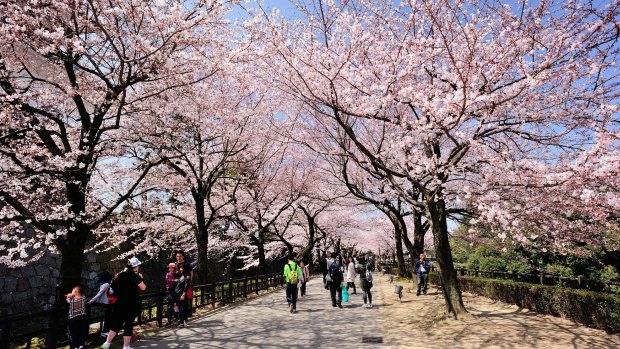
Credit: Shutterstock
In many ways this is the ideal season to be in Japan: the weather is cool but not cold, the humidity is low, there's still snow for skiing, and cherry blossom season sweeps the nation in a floral wave in April and May. The only downside is that everyone else is aware that this is a great time to explore. Tourists pour into the country's best hanami, or cherry-blossom-viewing spots, and this is also when you'll run into "Golden Week", when most of Japan goes on holiday and hotels book out months in advance.
Don't miss
Cherry blossom season is the time to see many already beautiful places at their best. Though Kyoto is the classic destination for international visitors, there are even better hanami spots: try Hirosaki Castle in Aomori, Goryokaku Fort in Hakodate, Odawa Castle in Kanagawa, or Himeji Castle in Hyogo.
Many of Japan's ski resorts are still open in spring. This is also the time to taste seasonal foods such as cherry-blossom mochi, strawberries, and fresh bamboo shoots. And spring is the only season in which you'll be able to see working geishas performing in public, as they do at Kamogawa Odori in Kyoto in May.
Key events
There are a few major "matsuri" held in spring. For the Sanja Matsuri, in the Tokyo district of Asakusa, more than 2 million spectators gather in May to watch portable shrines being carried through the streets. In Takayama, meanwhile, a riot of floats, drummers and dancers makes its way through the streets every April.
See also: Twenty things that will surprise first-time visitors to Japan
See also: The ultimate guide to Japan
Sign up for the Traveller Deals newsletter
Get exclusive travel deals delivered straight to your inbox. Sign up now.